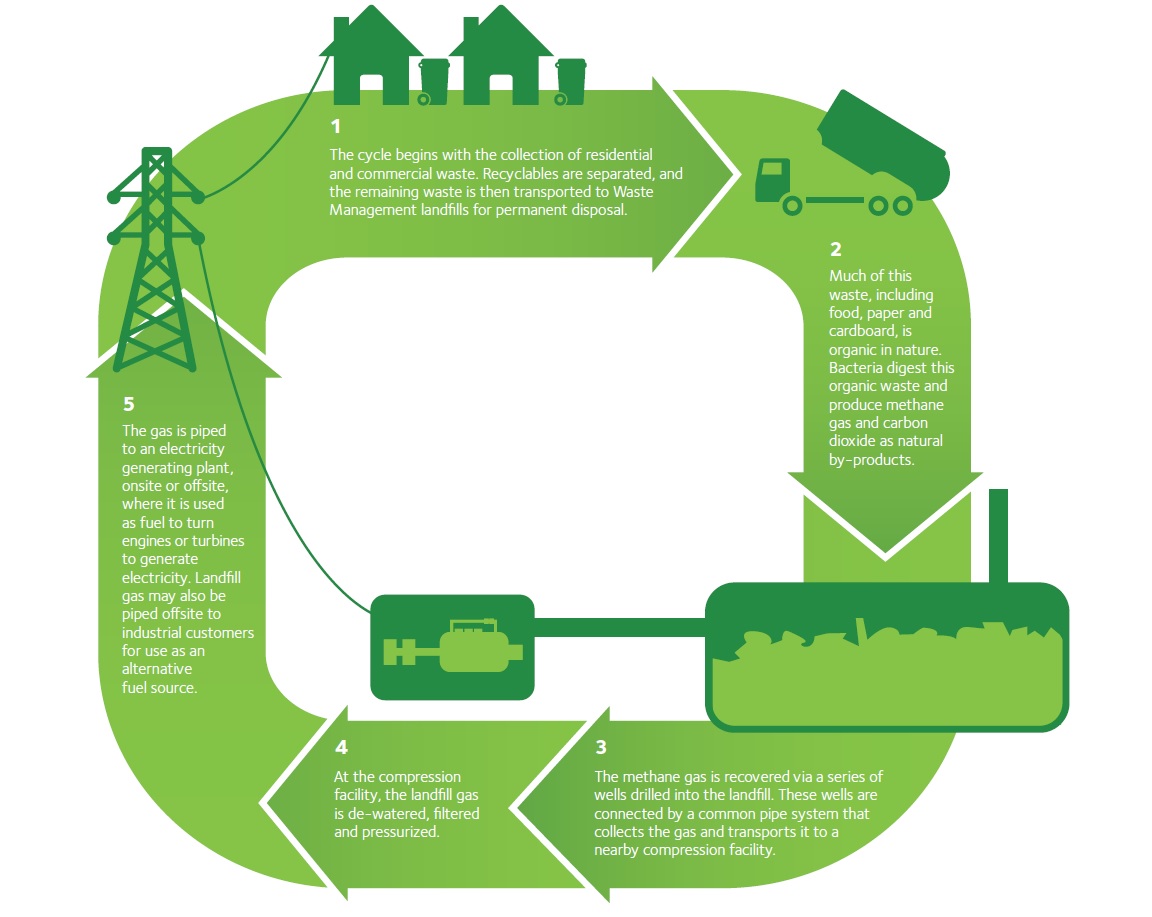Renewable Energy
Today’s modern, engineered landfill is an environmentally sound system for waste disposal. Landfills offer a clean, renewable energy resource that is generated continuously through the decomposition of the waste. This resource is known as landfill gas.
Landfill gas is a naturally occurring byproduct of the waste thrown out every day. Each person in the United States generates about 4.5 pounds of waste per day, and more than 50% of this waste is managed in municipal solid waste landfills such Mill Seat Landfill. Organic materials disposed of in a landfill- including food and sludge from the wastewater treatment process- help to promote the decomposition process. Landfill gas typically consists of about 50% methane (which is the primary component of natural gas) and 50% carbon dioxide, and so this gas is not very different from the natural gas that comes to your home through your local utility.
Most landfills collect landfill gas, a greenhouse gas, and burn it in a flare system to destroy it. Instead of simply flaring the gas, Waste Management uses this gas in a variety of applications to create green energy. Mill seat is turning landfill gas into electricity. This gas is collected and removed through a series of wells located throughout the landfill. To install a gas well, special equipment is used to drill into the waste and a pipe with holes, surrounded by gravel, is inserted to collect the gas flow. The wells are all connected to a central header pipeline, where the gas is currently channeled to a flare for combustion.

Mill Seat Renewable Energy Facility manages:
- 3,100 cubic feet per minute of landfill gas
- 68 gas extraction wells located throughout the site
The facility generates enough energy to power nearly 6,000 homes. With a large and growing number of beneficial-use gas projects around the country, Waste Management is a nationwide leader in turning landfill gas into electrical power. The company has 124 landfill gas to energy related projects operating in 19 states, which generate more electricity than the entire solar industry.
